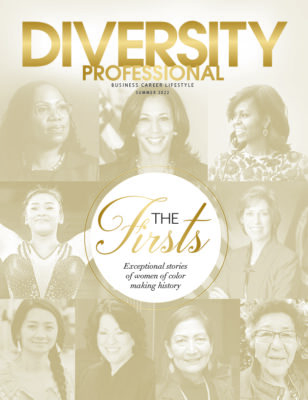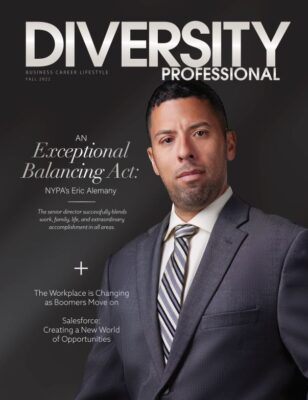Hispanics In Energy
WORKPLACE DIVERSITY
The Future is Bright with Opportunities.
“Energy affects us all, and we can’t survive without this valuable resource,” said Monica Martinez a former Michigan public service commissioner. She was appointed in 2005 and has the viewpoint of many around the country.

Currently, she is the president of Hispanics in Energy (HIE), a non-partisan, non-profit organization that engages Hispanics and other diverse communities in our nation’s energy policy dialogue and workforce. The group focuses on public policy, governance, employment, procurement (supplier diversity) philanthropy (community contributions) and customer service and marketing.
As a Latina among the first in her position, Martinez’s perspective revolves around two critical elements—energy and jobs. Early in her career she recalled how challenging it was to sit across from non-Hispanic leaders, which served as a stark reminder of the differences in their backgrounds.
Martinez believes members in the Hispanic community need to be better educated on energy issues and participate in the energy economy the oil and gas industry provides.
“Yes. We are consumers, but [we] should take an active role in not only the workforce but also the procurement process,” said Martinez.
As the first to serve on a Michigan commission with women as the majority, Martinez said that is when she knew her role was significant.
“That was the ‘aha’ moment when I knew there was not an organization for Hispanics who work and are directly involved in the energy industry,” she said.
Led by Chairman and CEO Jose L. Perez, who covers the West Coast, and Martinez, who serves as president, Hispanics in Energy was founded in 2012.
Hispanics in Energy actively helps to fill the positions left by oil and gas industry retirees, according to Martinez.
Her goal is to ensure corporations include qualified Hispanic candidates in the hiring process.
“We work with headhunters and human resources to provide and encourage a diverse applicant pool.
We are seeing more and more employers that are broadening their search to meet the changing landscape that is facing our country,” she said.

According to the Department of Labor Statistics, nearly 23 million Hispanics or Latinos represented, 15 percent of the U.S. labor force in 2010 . By 2018, Hispanics are expected to comprise 18 percent of the labor force.
“Our organization’s goal is to ensure we are doing a good job explaining to Hispanics what they need to do to prepare for an energy job. The type of jobs that we see are focused on marketing, accounting, sciences and even jobs in power lines,” said Martinez.
Hispanics in Energy believe their role is to brand energy as a positive field, and Martinez said she is hopeful they are getting their message out although it’s a challenge.
“We want to encourage young graduates that this is not a stodgy profession but rather a great environment to work and thrive,” said Martinez. “We need to ensure the pipeline is robust to get people into the field. Sometimes, we still have first generations who are going to college. We are challenged because students learn from what is familiar. Our desire is for HIE to bring familiarity with the career profession of energy in oil and gas industry,” she said.
According to the American Petroleum Institute’s report on “Minority and Female Employment in the Oil & Natural Gas and Petrochemical Industries,” Hispanic workers held 283,000 jobs across the combined oil & gas and petrochemical industries—20 percent of the total. According to population projections for 2060, the Hispanic population will constitute 31 percent, or 128.8 million, of our nation’s population.
“I believe there are a lot of exciting [things] happening in 2017,” said Martinez. Martinez was encouraged by the first Latina leading a major utility: Geisha J. Williams is president of Electric at Pacific Gas and Electric Company.
“Along with HIE’s work with the Department of Energy, there is increasing engagement with minorities, but we are always looking for more opportunities. We have sat down with Ms. Williams about the opportunity and possibilities with the C-Suite, Board and the chance to be at the table to have qualified candidates considered for key positions,” said Martinez.
She added, “There is a recognition of the changing times in our community. As you look at the energy industry, we should all make strides with women, minorities in the energy profession. As a person of color, my hope is that Chief Executive Officers will stay connected.”
Turning toward the procurement process, she explained Hispanics continue to make progress but still have more work to do.
“There are some challenges in the procurement and energy areas. Access to capital, being informed and understanding the industry continue to be barriers to bidding and securing contracts,” she said.
As the trends and conversation continues, Martinez said she hopes corporations take a closer look at the standards and numbers that will open the door to more Hispanics in business.
“We are just seeing the numbers being closely looked at. The process of getting our members and other Hispanics in the door remains to be a challenge. The PUCA California numbers shows there is significant opportunity where only 5 percent of utilities spend money with Hispanics companies. Our goal is to focus on energy infrastructure and ensure economic investment are shared widely as possible,” she said.









